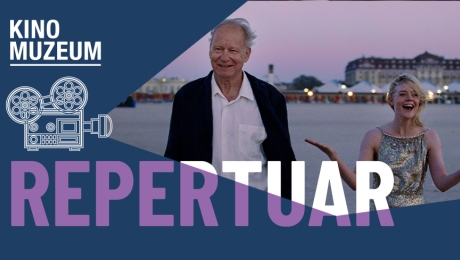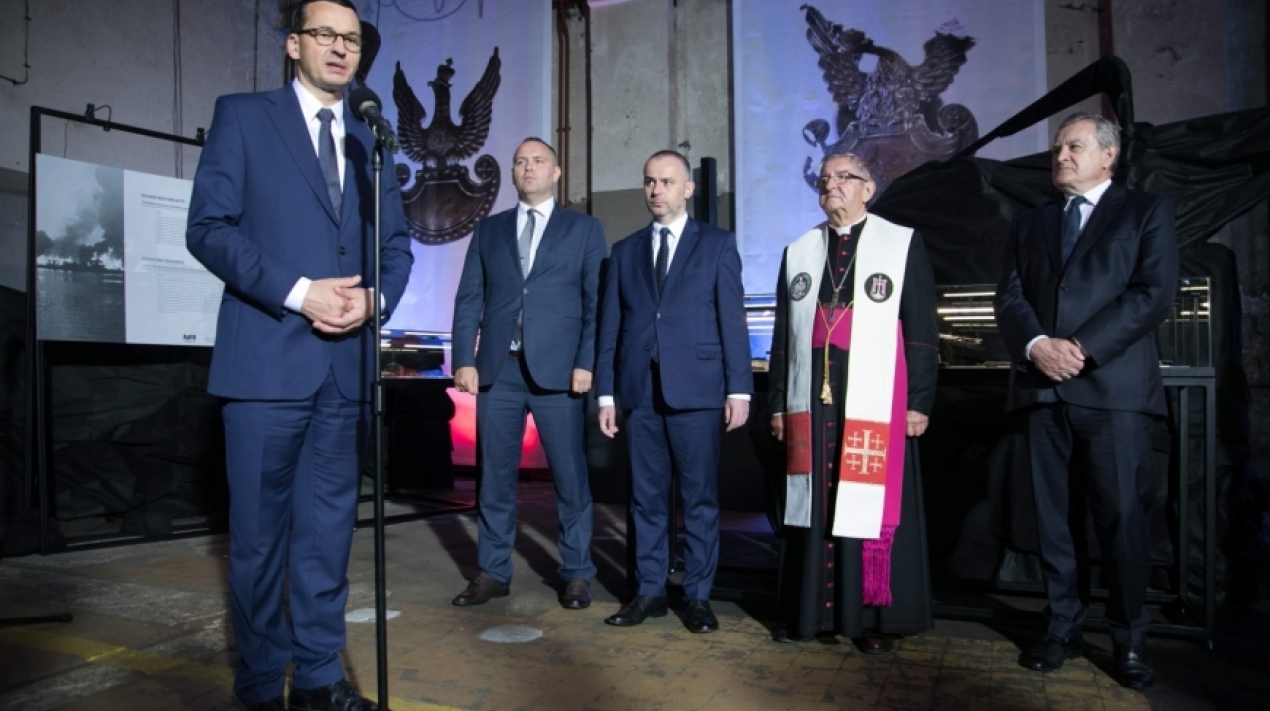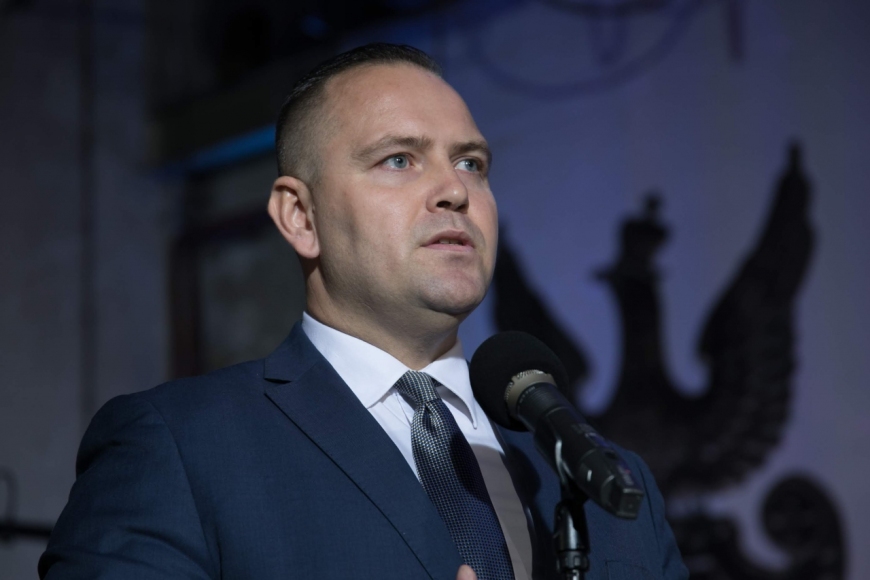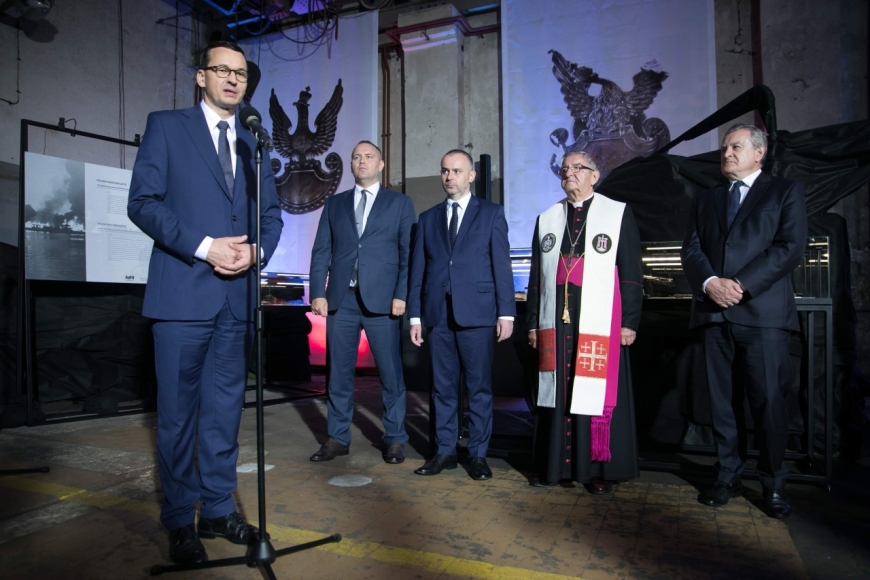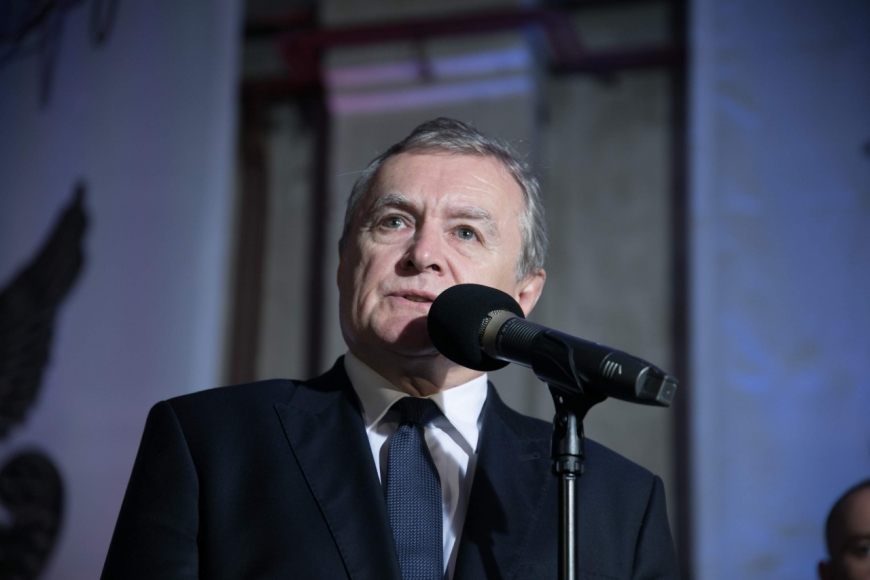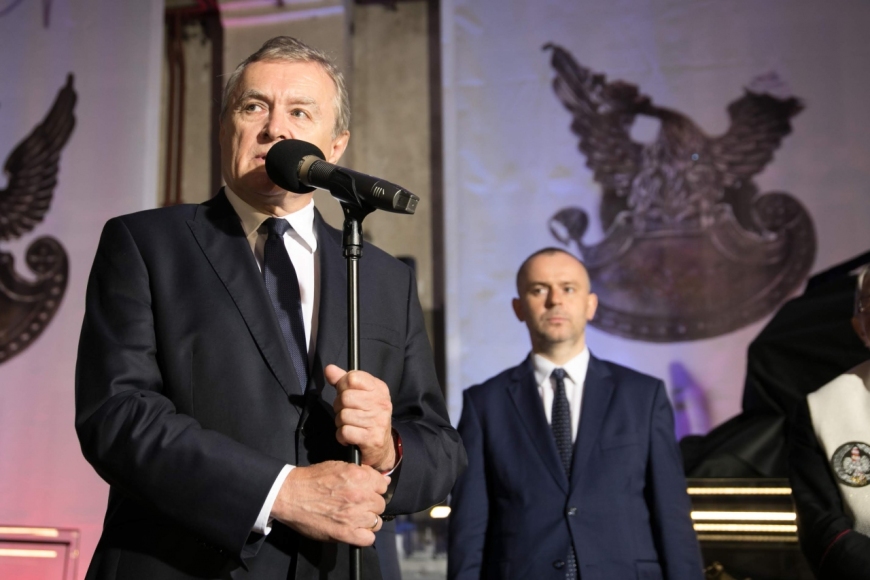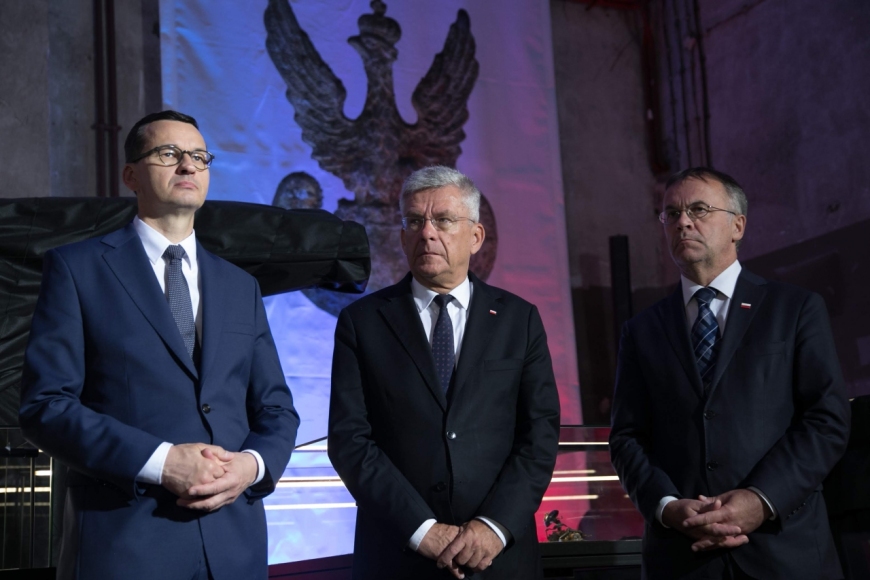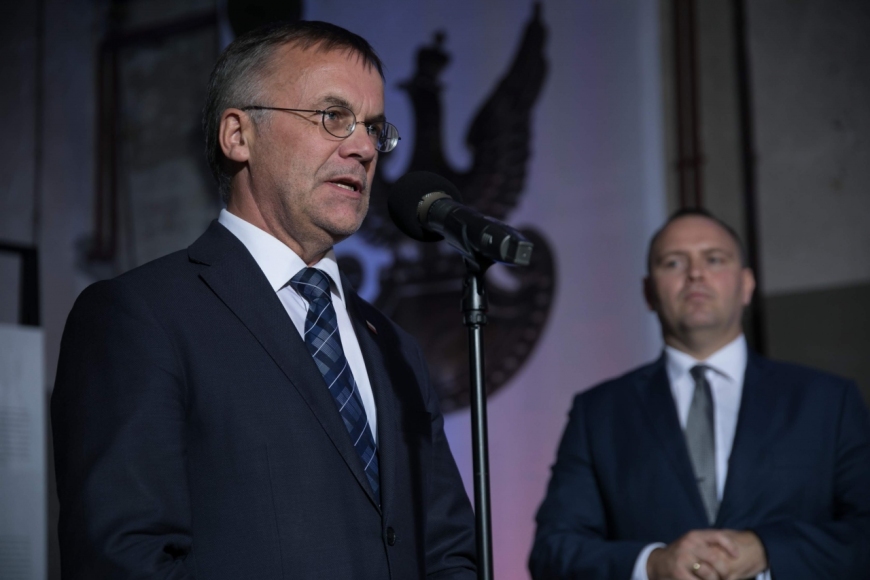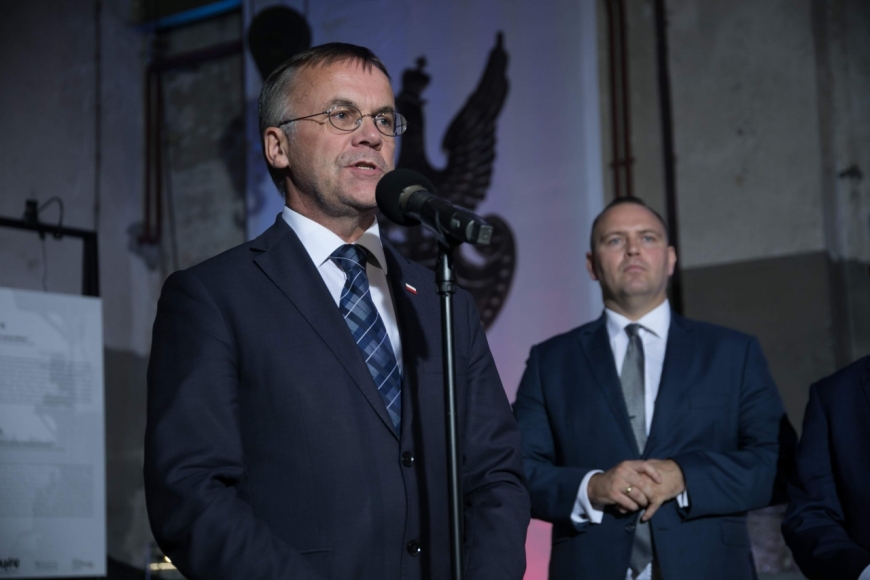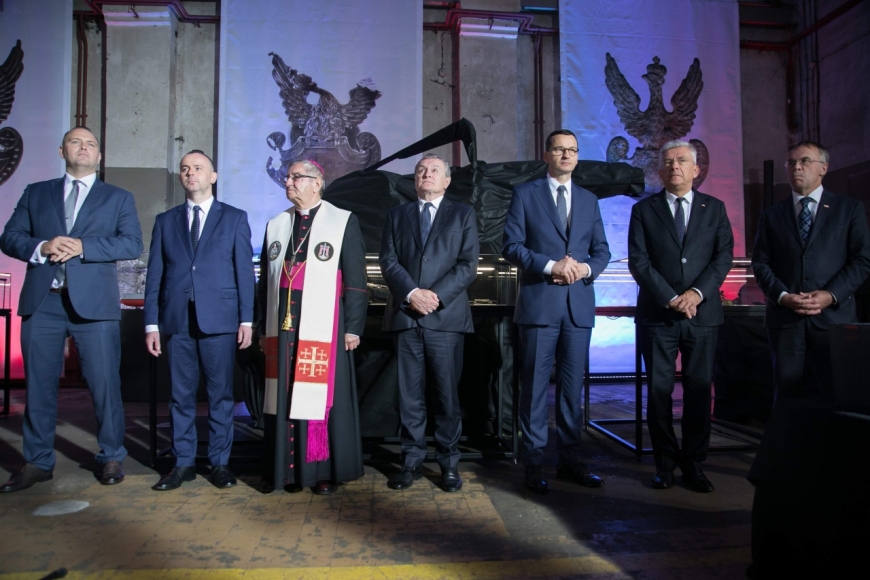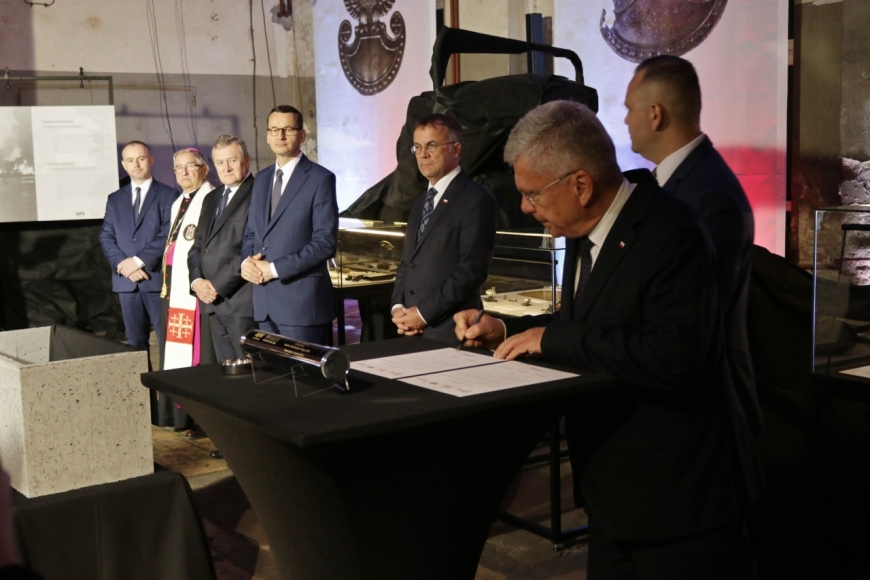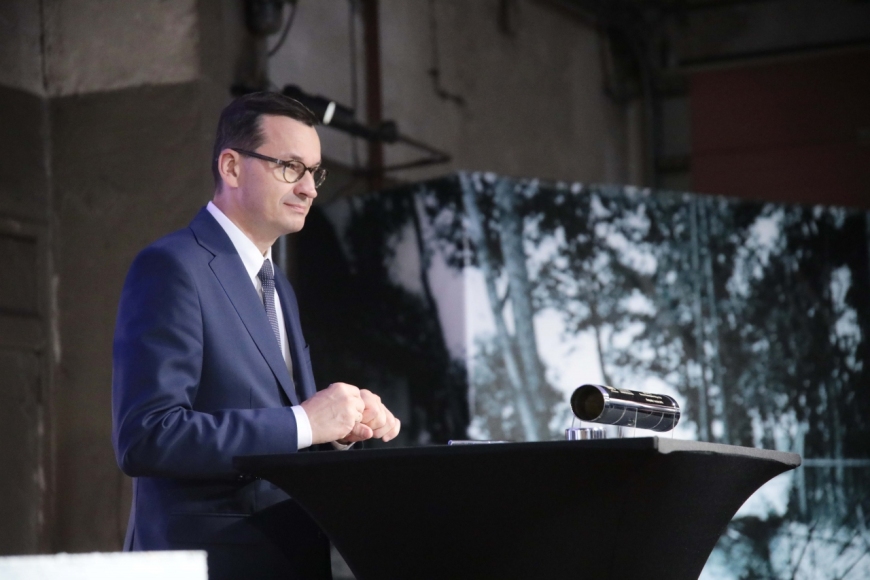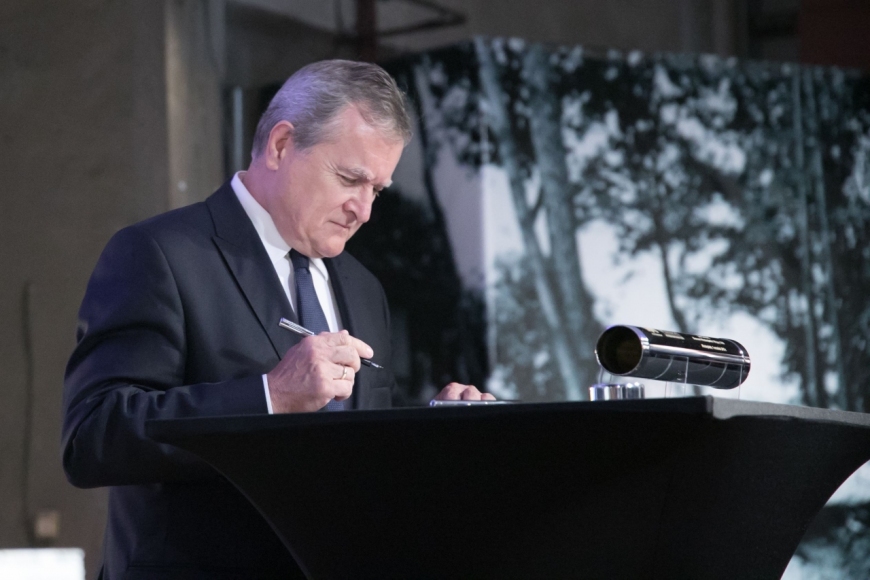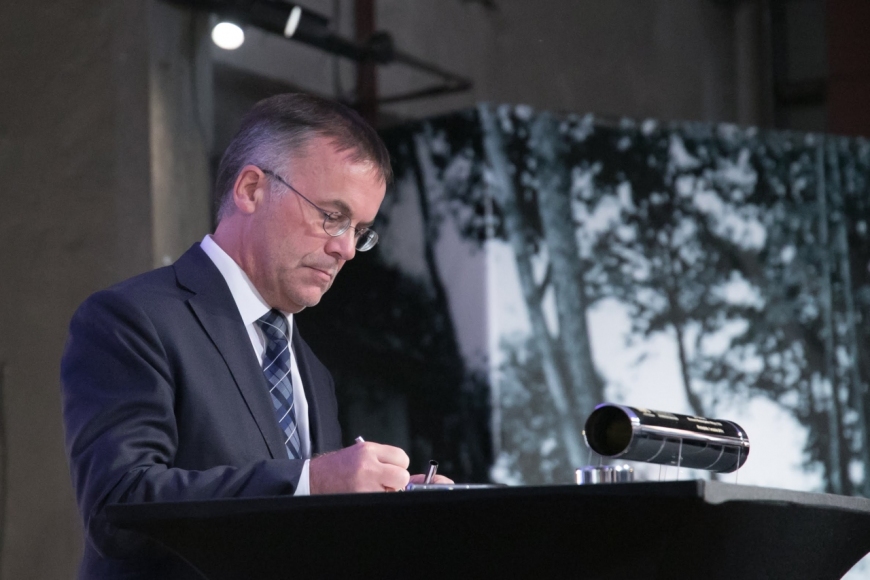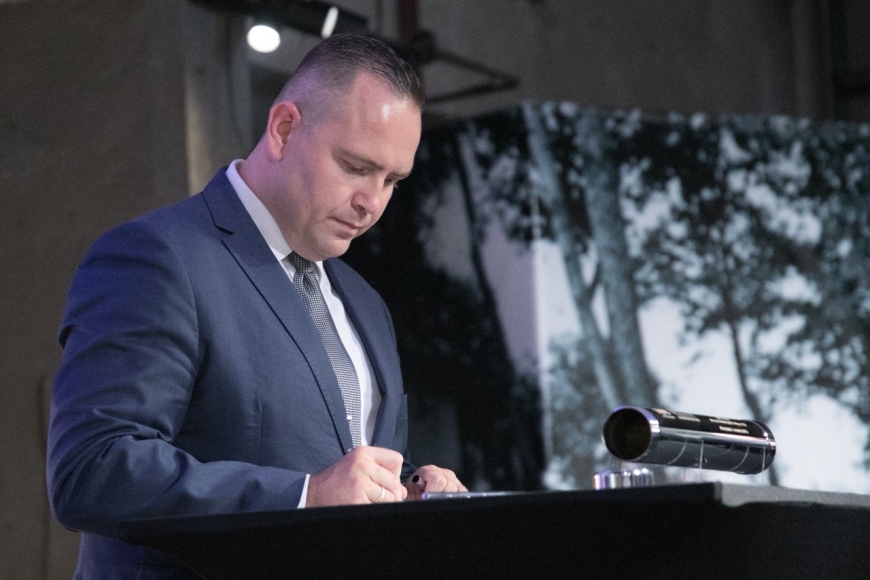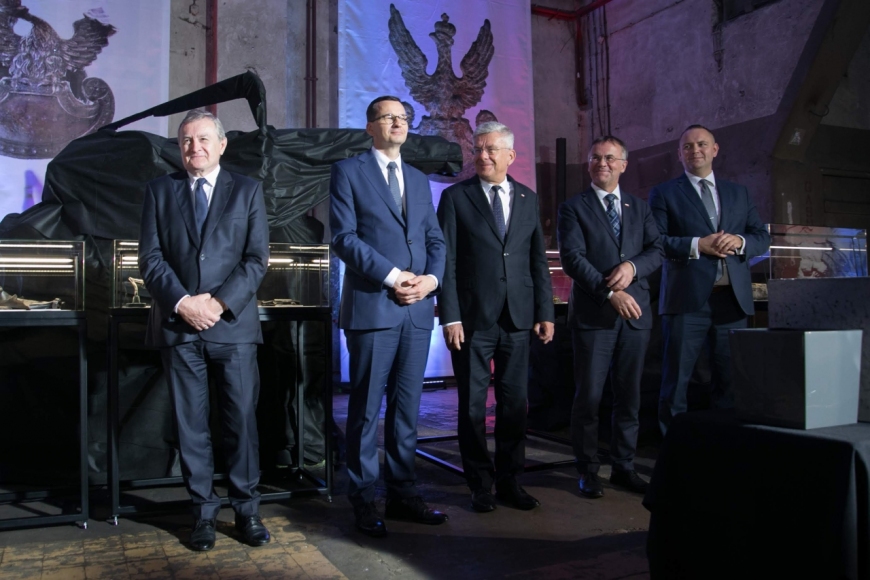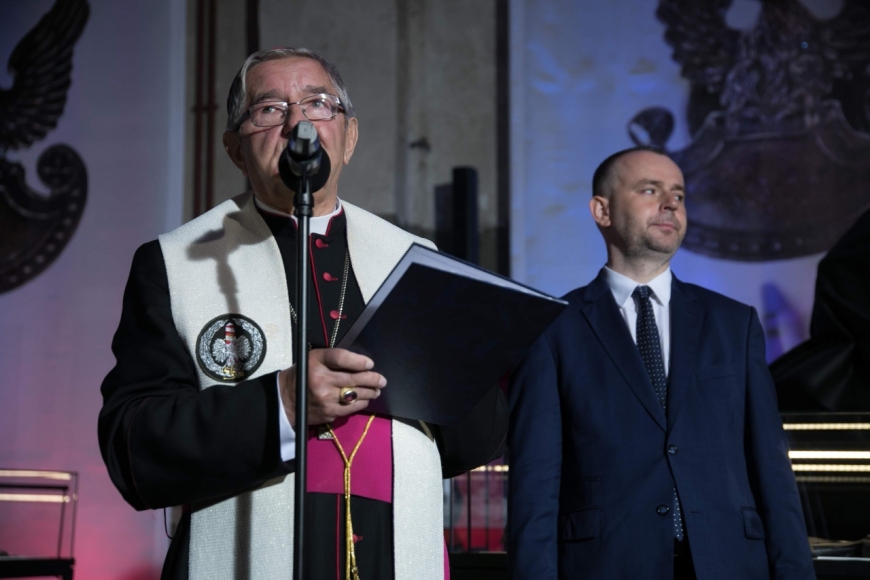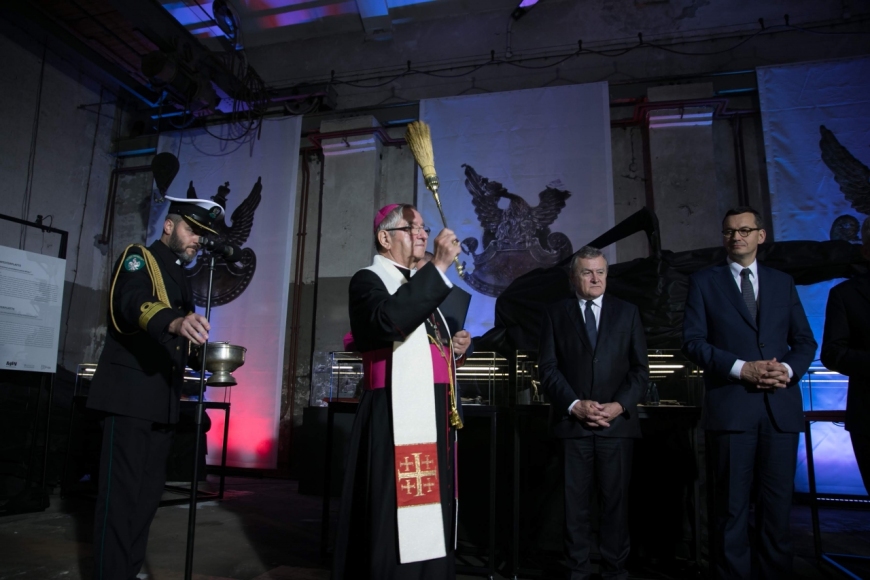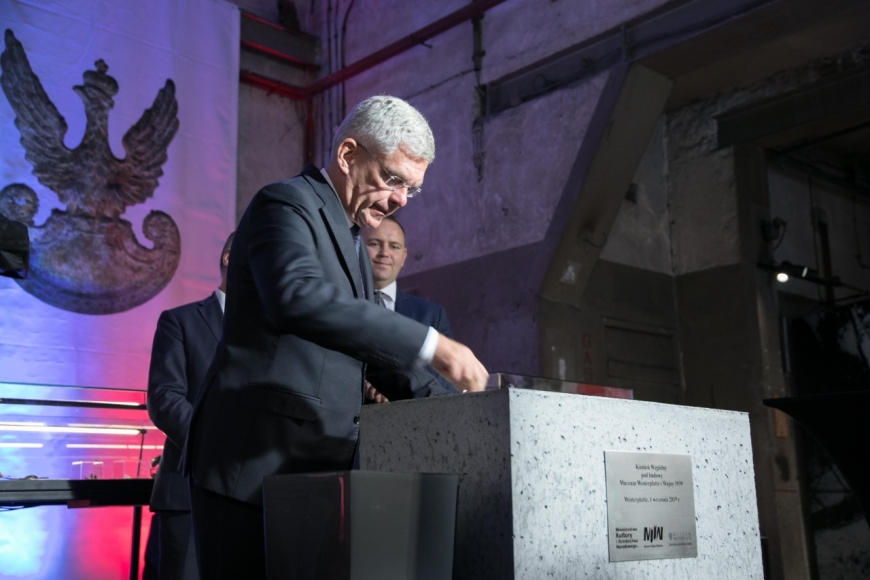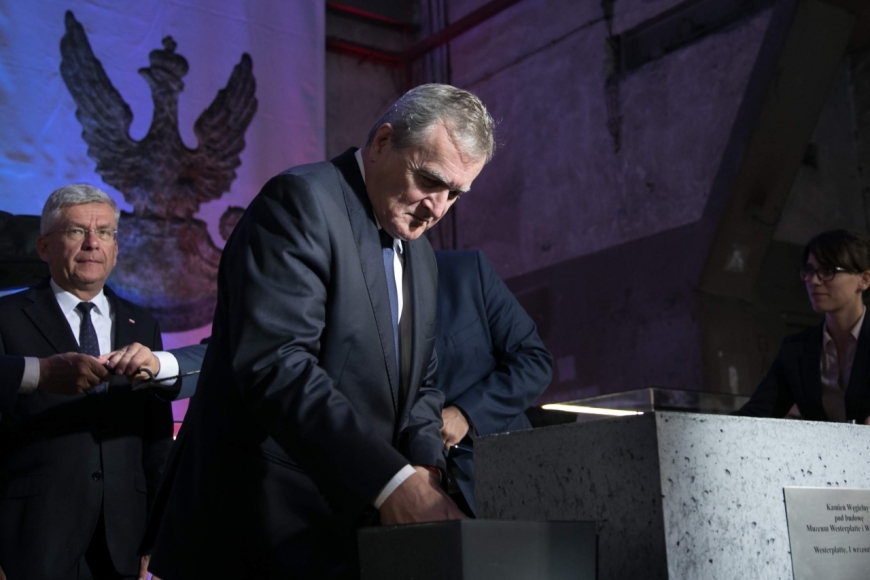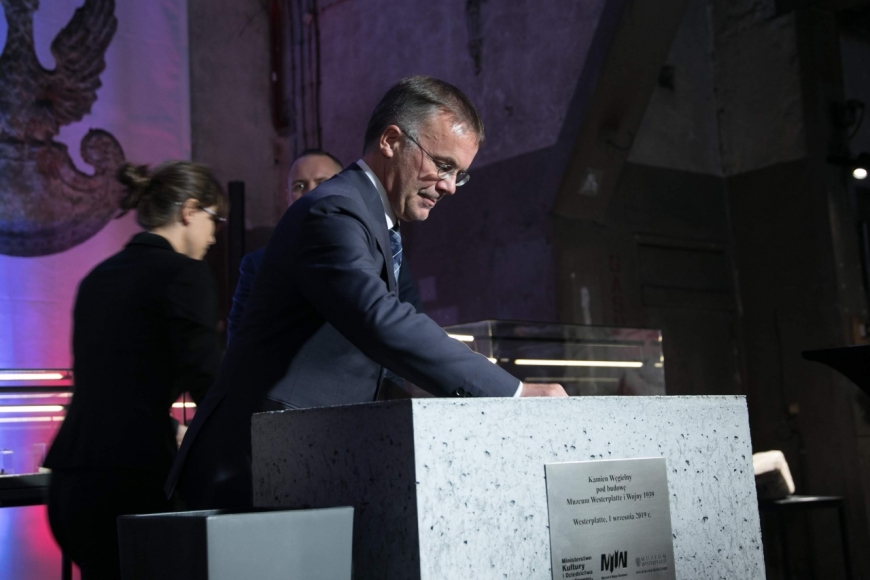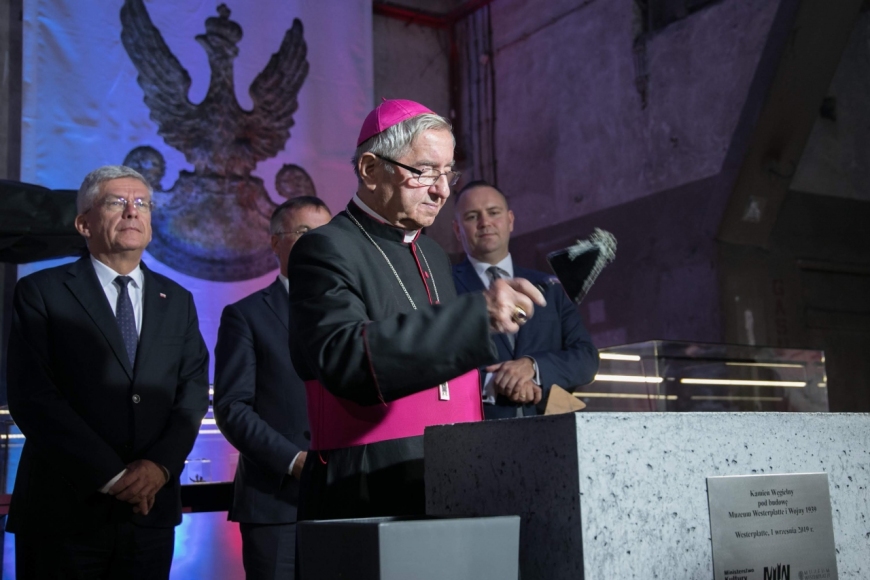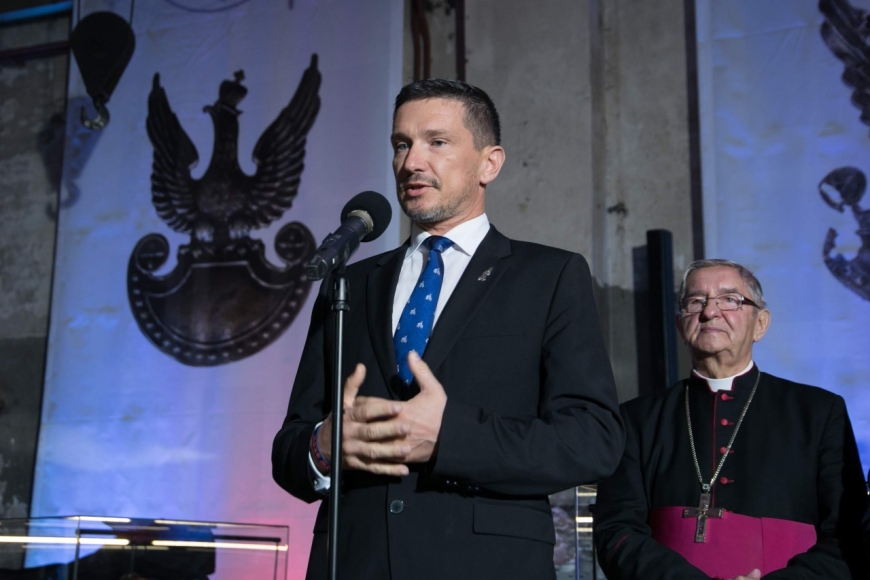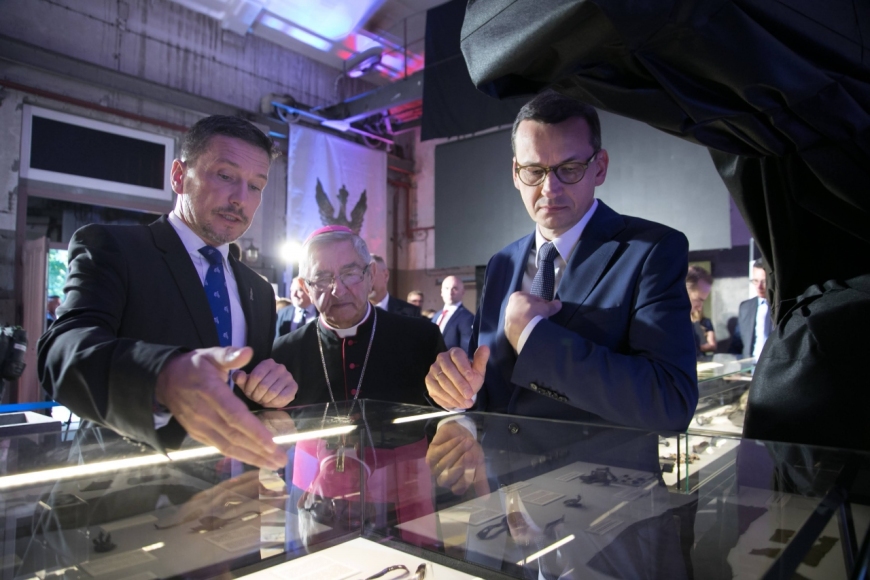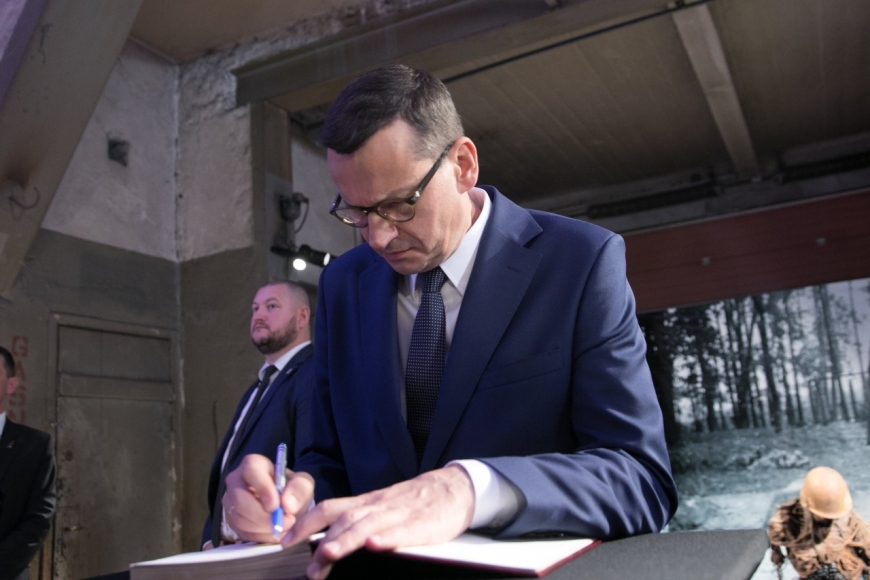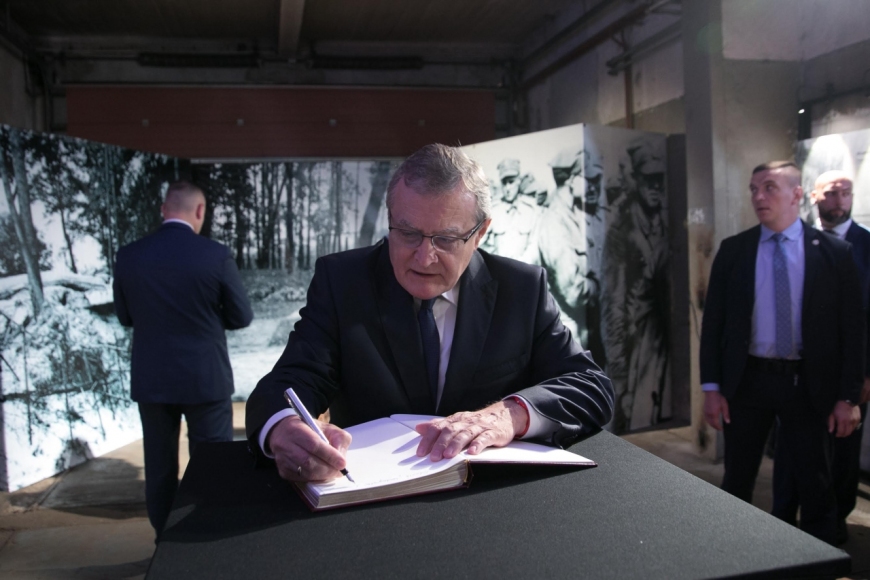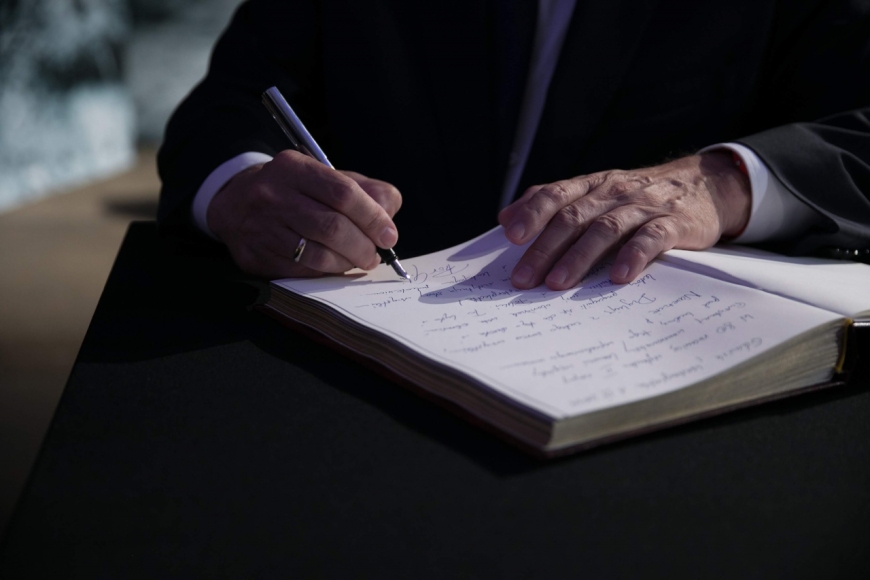Laying the Foundation Stone for the Museum of Westerplatte and the War of 1939
On 1 September 2019, immediately after concluding the celebration at the monument to the Defenders of the Coast in Gdańsk, an official foundation stone laying ceremony for the Museum of Westerplatte and the War of 1939 and opening of a special exhibition was held at the Westerplatte Power Plant building.
The ceremony was participated by Mateusz Morawiecki - President of the Council of Ministers, Stanisław Karczewski - Marshal of the Senate, Piotr Gliński - Minister of Culture and National Heritage, Jarosław Sellin - Secretary of State at the Ministry of Culture and National Heritage, Sławoj Leszek Głódź - Metropolitan Archbishop of Gdańsk.
The guests were greeted by Karol Nawrocki PhD - Director of the Museum of the Second World War in Gdańsk:
“Please allow me to close the greetings with words of thanks for granting the Museum of the Second World War the honour of investing in and building the Museum at the Westerplatte, a site which is sacred for many Poles. It is of course a tremendous responsibility, but we regard it as a great honour for our institution. (...) Today, Westerplatte is not only history, but also starts to become the future. Westerplatte itself as well as the future were referenced by the St. John Paul II in his homily to the youths in June 1987. He talked about the future and added that if we want to defend our history, we need to know it first - and in order to learn about our history, we will build here, a beautiful Museum that will speak about the heroes of September 1939. It will also address universal values which are taught to Poles by Westerplatte; that we are able to fight for the values we consider important, even in the face of overwhelming odds (...). In his homily, John Paul II spoke words which could be cited by any one of us - everyone has their own Westerplatte. As of today, our Westerplatte will be the construction of the Museum of Westerplatte and the War of 1939.”
Next to speak was Mateusz Morawiecki - Prime Minister:
“Allow me to express great joy and gratitude for all those who contributed to preserving the memory of the Westerplatte fight as well as the entire campaign of September and beginning of October 1939, as at that time Poland changed history. The fact that we threw ourselves into the fight, an unequal fight with the German Reich, changed the history of the world. It is often said that Westerplatte is like a Polish Pearl Harbor when actually it should be the reverse. Westerplatte happened first, a long time earlier. (...) Pearl Harbor should be regarded as American Westerplatte, and that is how it should be in the future, as this is the actual course of events, history, and the truth. (...) Today, by laying the foundation stone for the construction of the Museum of Westerplatte and the War of 1939 we are making up the losses of the last 30 years and perform work which will be important not only for ourselves and our descendants, but also for Europe and the entire World.”
The next speaker was Piotr Gliński – Minister of Culture and National Heritage:
“This is a great moment and an auspicious day. The 80th anniversary of the outbreak of the war, a day of reflection and remembrance, and at the same time, a happy occasion as we are breaking out of a certain malaise. (...) I think that we refer to the message of the Westerplatte combatants, to the famous speech by John Paul II, then yes, our Westerplatte is, among other things, to fulfil the obligation of keeping the memories alive. I am proud to be a part of this undertaking and having the honour of completing this task. (...) I would like to extend a sincere thank you to the people and communities thanks to whom we can start construction of this institution, which is so very needed in Poland, and also important for the people who died here defending the most fundamental of values. (...) We are beginning something that is good, something that will bind us together. I believe that this work will bring everyone together.”
The Secretary of State at the Ministry of Culture and National Heritage Jarosław Sellin spoke thus:
“I would like to thank the Historical Reconstruction Society of the Westerplatte Transit Depot (Stowarzyszenie Rekonstrukcji Historycznej Wojskowej Składnicy Tranzytowej na Westerplatte), founded by Mariusz Wójtowicz-Podhorski over 20 years ago, which has been taking care of this location with the aid of the community and without support of state institutions for many years. Only in 2006, did the Association finally receive aid and consequently, worked towards finally realising our dream of creating the Museum of Westerplatte and the War of 1939. I would like to thank Mr Marian Kwapiński - former voivodeship monument conservator – who, for the last ten years, has been making the effort to limit the devastation of the area and preserve the relics at Westerplatte through appropriate conservation decisions. I would also like to thank the current voivodeship monument conservator, Mr. Igor Strzok, who developed the early concept of the Museum, as a historic park, open-air museum, a form which will be completed to a large extent. Finally, I would like to thank Minister Mariusz Błaszczak, the Polish Armed Forces, as it is thanks to good cooperation with our military that we were able to obtain the Power Plant where the Museum of Westerplatte and the War of 1939 is to be created. We are embarking to realise the dream we spoke about over a dozen years ago. It did not work - those who took power after we lost it in 2007 abandoned the project, and immediately after we took power again in 2015, we founded the Museum and today, we are starting its construction. It is my belief and dream that in 2023, the 20th anniversary of entering the Westerplatte battlefield on the exclusive presidential list of historical monuments, we will have completed a large part of the Museum. It is an ambitious plan - and I say this publically in order to motivate the leading investor, i.e. Museum of the Second World War Director, Karol Nawrocki to work hard towards its realisation. I am certain that he will be up to the task. Today, by the symbolic laying of the foundation stone, we can say that the investment has officially begun.”
Next, the foundation act was signed, which will be placed in a time capsule and placed in a concrete enclosure. Sławoj Leszek Głódź, the Metropolitan Archbishop of Gdańsk blessed the foundation stone laid for the Museum of Westerplatte and the War of 1939 on the 80th anniversary of the outbreak of World War II in Gdańsk.
The Museum of Westerplatte and War of 1939 - Branch of the Museum of Second World War - prepared an exhibition at the historic Power Plant building. The exhibition presents items obtained during archaeological excavations conducted at this location. The exhibition opening was accompanied by laying the foundation stone for the Museum of Westerplatte and the War of 1939 on the peninsula.









